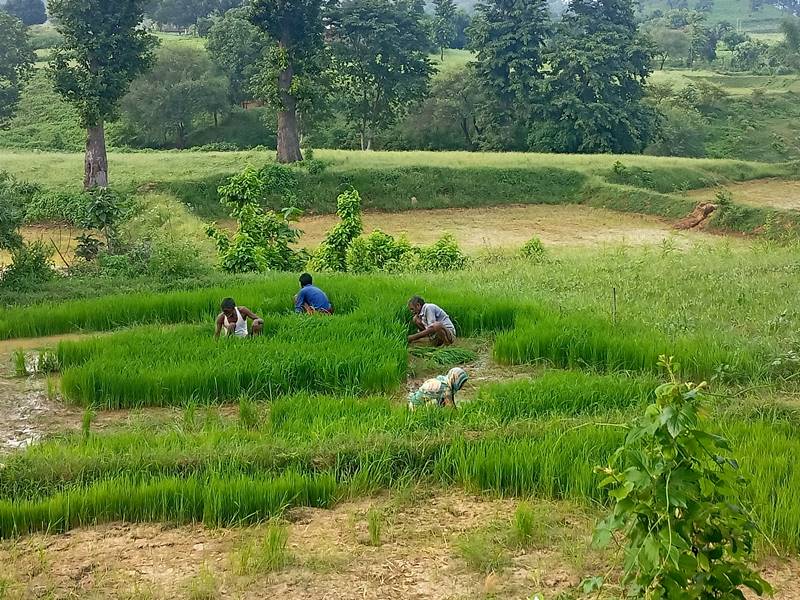Half of farm households in rural India in debt; every fifth such household took loan from private moneylender
As per the latest NSO survey, ‘Situation Assessment of Agricultural Households and Land Holdings of Households in Rural India, 2019’, every second agricultural household in India is indebted. On an average, outstanding loan per agricultural household is Rs 74,121. Only 57.5 % of the loan was taken for agricultural purposes.


It is estimated the number of agricultural households in the country is at 93 million. Photo: Pixabay
More than half of India’s agricultural households are in debt and the average debt has jumped by nearly 58 per cent in the five years period between 2013 and 2018. This has been pointed out in a survey conducted by the National Statistical Office (NSO), statistics wing of the Ministry of Statistics and Programme Implementation.
The report, titled ‘Situation Assessment of Agricultural Households and Land Holdings of Households in Rural India, 2019’, released yesterday on September 10, highlighted that 50.2 per cent of agricultural households in the country were in debt with an average outstanding loan per agricultural household at Rs 74,121 in 2018.
Whereas the good news is that the percentage of these agricultural households in debt has slightly reduced from 51.9 per cent in 2013 to 50.2 per cent in the recent survey, the worrisome fact is that the average amount of outstanding loan per such household has jumped 57.7 per cent in the five years period — from Rs 47,000 in 2013 to Rs 74,121 in 2018.
The National Statistical Office has reported these findings based on its 77th round of survey of more than 45,000 farm households conducted between January 1 and December 31, 2019.
Also Read: The tihaiya farmers of Vindhya region caught in a cycle of debt and destitution
An agricultural household for NSO 77th round survey was defined as a household receiving more than Rs 4,000 as value of produce from agricultural activities such as cultivation of field crops, horticultural crops, fodder crops, plantation, animal husbandry, poultry, fishery, piggery, bee-keeping, vermiculture, sericulture, and having at least one member self-employed in agriculture either in the principal status or in subsidiary status during last 365 days.
The survey also pointed out that of the total loan, only 57.5 per cent was taken for agricultural purposes. Besides, only 69.6 per cent of the outstanding loans were taken from institutional sources such as banks, cooperative societies and government agencies, whereas 20.5 per cent of loans were taken from professional money lenders.

The survey was conducted in two visits during January-August 2019 and September-December 2019.
Income from monthly wages doubled in six years
In 2016, the Narendra Modi-led government announced to double farmers’ income by 2022.
Interestingly, farm income was claimed to have doubled from Rs 2,071 in 2012-2013 to 4,063 in 2018-19 on account of higher monthly wages.
Total income of agricultural households increased to Rs 10,218 in 2019 from Rs 6,426 in 2013, the recent survey claimed. The highest share in the total average income was of income from wages at Rs 4,063.
The NSO survey estimated the number of agricultural households in the country at 93 million and non-agricultural households living in rural areas at 79.3 million. It also highlighted that 83.5 per cent of rural households had less than one hectare of land.
Gaon Connection Survey
Last summer, Gaon Connection, India’s biggest rural media platform conducted a first-of-its-kind national rural survey based on face-to-face detailed interviews with 25,300 respondents, carried out in 179 districts across 20 states and three union territories. The survey found 20 per cent of the respondents said that they had to pledge or sell land, jewellery and valuables in order to tide over the lockdown. Another 23 per cent had to borrow money to meet various expenses.
This rural survey found that in Haryana, Punjab, Assam, Uttar Pradesh, Bihar, Jharkhand, Odisha and Madhya Pradesh, people had borrowed more loans than in other states. In Tripura, 13 per cent had to sell off or mortgage land and 20 per cent their valuables. In West Bengal, 22 per cent of people had jewellery and 17 per cent had their valuables sold or mortgaged.

